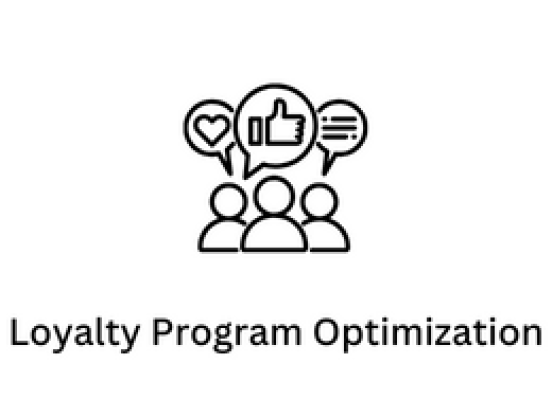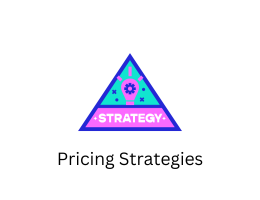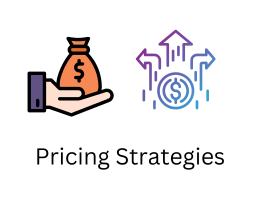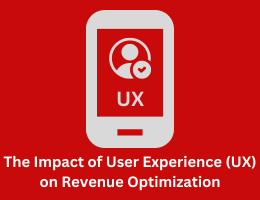
Loyalty Program Optimization
- By admin --
- Tuesday, 30 Jan, 2024
Introduction: Loyalty programs are integral components of modern business strategies aimed at fostering long-term relationships with customers. These programs offer incentives to encourage repeat purchases, increase customer retention, and ultimately drive revenue growth. However, not all loyalty programs are equally effective. Optimization is key to ensuring that these programs deliver maximum value to both customers and businesses. This article explores various strategies for optimizing loyalty programs to enhance their effectiveness and impact on revenue generation.
Understanding the Importance of Loyalty Programs: Loyalty programs play a crucial role in today's competitive business landscape. They serve as powerful tools for building and maintaining customer loyalty, which is essential for sustainable growth. Research has shown that loyal customers are more profitable than new ones, as they tend to spend more, make repeat purchases, and act as brand advocates. By incentivizing loyalty through rewards, discounts, and exclusive perks, businesses can increase customer retention rates and drive incremental revenue.
Key Components of Loyalty Program Optimization:
-
Define Clear Objectives: Before optimizing a loyalty program, it's essential to establish clear objectives aligned with business goals. Whether the focus is on increasing customer lifetime value, driving repeat purchases, or expanding market share, defining specific metrics and targets will guide optimization efforts.
-
Segment Customers Effectively: One-size-fits-all approaches rarely yield optimal results in loyalty programs. Segmenting customers based on demographics, behavior, purchasing patterns, and preferences allows for personalized rewards and communications tailored to specific audience segments. By targeting the right incentives to the right customers, businesses can maximize engagement and retention.
-
Offer Compelling Rewards: The effectiveness of a loyalty program hinges on the attractiveness of its rewards. Whether it's points, discounts, freebies, or exclusive access, rewards should provide tangible value and resonate with customers' interests and preferences. Regularly evaluate and update the reward offerings to keep the program fresh and relevant.
-
Simplify Enrollment and Redemption Processes: A frictionless experience is essential for driving participation in loyalty programs. Streamline the enrollment process to make it quick and easy for customers to sign up. Similarly, ensure that redeeming rewards is straightforward and intuitive, whether online, in-store, or through mobile apps. Removing barriers to participation and redemption enhances overall program satisfaction.
-
Leverage Data Analytics: Data analytics is a powerful tool for optimizing loyalty programs. By analyzing customer data, businesses can gain insights into preferences, purchasing behavior, engagement levels, and churn risk. These insights enable personalized marketing campaigns, targeted promotions, and strategic adjustments to the loyalty program structure based on empirical evidence rather than guesswork.
-
Encourage Engagement and Interactivity: Active engagement is key to the success of loyalty programs. Implement gamification elements such as challenges, milestones, and social interactions to make participation more enjoyable and rewarding. Encourage customers to interact with the program regularly through surveys, feedback mechanisms, and interactive features that foster a sense of community and belonging.
-
Foster Emotional Connections: Beyond transactional benefits, loyalty programs should aim to foster emotional connections between customers and the brand. Personalized communications, special surprises, and meaningful gestures go a long way in making customers feel valued and appreciated. Building trust, empathy, and emotional resonance strengthens the bond between customers and the brand, driving long-term loyalty and advocacy.
-
Monitor and Iterate: Optimization is an ongoing process that requires continuous monitoring, analysis, and iteration. Regularly track key performance indicators such as enrollment rates, redemption rates, engagement metrics, and customer satisfaction scores. Use feedback from customers and frontline staff to identify pain points, areas for improvement, and emerging trends. Be agile in making adjustments to the program structure, rewards, and communication strategies based on real-time insights and market dynamics.
Case Studies:
-
Starbucks Rewards: Starbucks' loyalty program, Starbucks Rewards, is a prime example of effective loyalty program optimization. By offering personalized rewards, tiered membership levels, and mobile payment integration, Starbucks has successfully incentivized repeat visits and increased customer spend. The program's seamless user experience and mobile app features have contributed to its widespread adoption and ongoing success.
-
Sephora Beauty Insider: Sephora's Beauty Insider program leverages data-driven personalization to offer tailored rewards, exclusive access to events, and personalized product recommendations. By gamifying the shopping experience with points, tiers, and perks, Sephora encourages customer engagement and loyalty while gathering valuable insights into customer preferences and behavior.
Conclusion: In today's competitive business landscape, loyalty programs are indispensable tools for fostering customer loyalty, driving repeat purchases, and maximizing revenue. However, to achieve optimal results, these programs must be strategically designed, continuously optimized, and tailored to the needs and preferences of target customers. By implementing the strategies outlined above and learning from successful case studies, businesses can enhance the effectiveness of their loyalty programs and cultivate long-term relationships with their most valuable asset: loyal customers.





